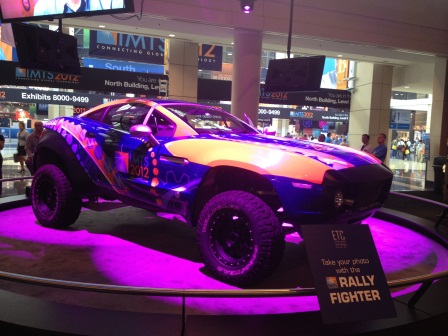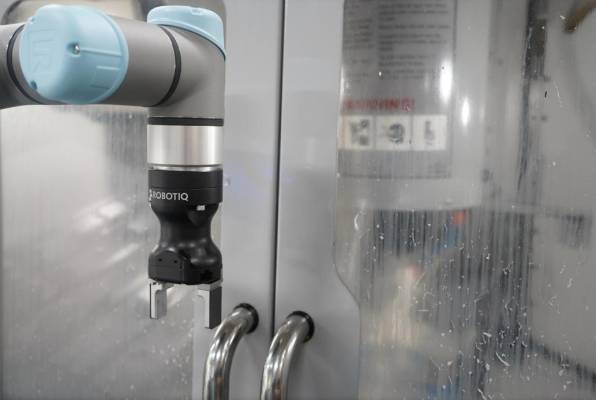Collaborative Manufacturing

Posted on Sep 19, 2012 11:35 AM. 3 min read time
Back from IMTS, met great people, saw impressive machines, even some Adaptive Robot Grippers on robots in Motoman and Productivity booths. ;)
The most intriguing concept that I encountered there was Collaborative Manufacturing, exemplified by the Rally Fighter, a 75k$ mad-looking car made in small lot sizes by Phoenix based Local Motors. Here is a summary of the discussion that I had with John B. Rogers Jr., co-founder and CEO of Local Motors.

SB: How do you do collaborative design?
JBR: We have a community of 25,000 contributors, engineers, designers or simply machine lovers. We use online tools like wikis to communicate. Everything is open source and accessible. You can download CADs of parts, modify them and re-upload them. We launch specific challenges to tackle issues that need to be addressed in priority. For some highly subjective decisions like accessory design, we have polls and the crowd has the final word. For highly technical decisions like the center of gravity or suspension design, we take into account our contributors' voice but we make the final decision.
SB: Is it a way toward mass customization?
JBR: No, that does not mean that everybody can have his own car exactly how he wants it.
In fact, we will offer fewer options than a regular car manufacturer once a version is released. The expression "mass customization" only exists because we know "mass production", but it has no appeal to me. Collaborative manufacturing rather means using the crowd's input to have a good product-market fit for a given niche. Then we manufacture in small efficient lots being as agile as we can.
SB: Could the approach be used for any type of product?
JBR: You need a lot of people and a lot of passion to make it work. Cars, planes, bikes, firearms, houses, these are all good examples of products with enough emotional appeal to gather a community of contributors.
SB: How do you version cars that are continuously evolving like yours?
JBR: Its a good question because for a long time there has always been a 1956 Cadillac, then a 1957 Cadillac. But when we started, we used more of a software terminology. We had version 1, then version 1.1. Different parts of the cars are in fact at different versions. And all the trade journals didn't know what to do with it. So we're considering returning to the standard model.
SB: What do contributors get?
JBR: Money, fame, feedback and experience. The first 10 winners in a challenge, for instance, will all get something. It's important to show that we respect their work. Whether they win a challenge or not, they always gain in experience, exposing their work to their peers, getting feedback, building their portfolio and credibility.
Turning Manufacturing Upside Down
One thing that I like about robotics and 3D printing in this age is that I see it as a way to bring back all the digital information into the tangible world. This open source approach to hardware design also works along those lines. Collaborative tools and flexible manufacturing methods enable the hardware to evolve like software did in the last decades.
I am sometimes nostalgic of the world I used to work in - web-based services - where you can build something and quickly get feedback from the users to continuously evolve your product in the right direction.
When you design hardware, this feedback loop takes a much longer time. And it's a double whammy because getting this feedback is even more vital in hardware because of the development time and cost. And it takes a lot of work to get feedback.
Collaborative manufacturing increase the feedback loop frequency and can make the hardware design process much more efficient.
Mass produced consumer hardware owns the vast majority of the market nowadays. Collaborative manufacturing could make the pendulum swing back in favor of the local craftsman, becoming their secret product development weapon to tap into the long tail, that should theoretically represent the largest part of the market.
The local chopper could evolve from being a skilled artist to being a micro Harley Davidson with highly relevant products that would resonate with a niche market. This will take time because there is a lot of inertia to many more things besides hardware, but we'll get there.
And then all these small manufacturers will also need tools for agile automation, which is not a bad thing either.









Leave a comment